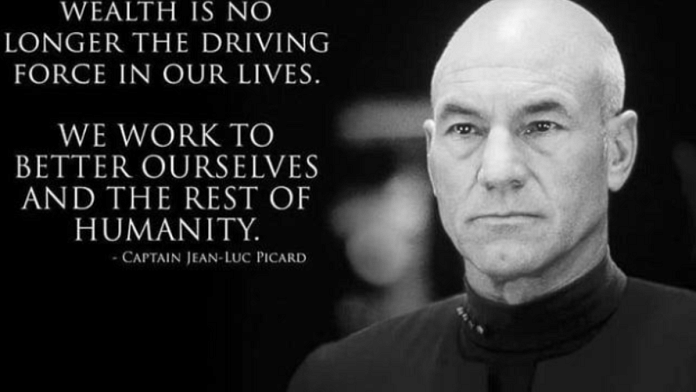Thank you dear subscribers, we are overwhelmed with your response.
Your Turn is a unique section from ThePrint featuring points of view from its subscribers. If you are a subscriber, have a point of view, please send it to us. If not, do subscribe here: https://theprint.in/subscribe/
India stands at a pivotal digital juncture—torn between the legacy infrastructure of Cold War-era banking alliances and the transformative potential of cryptographic innovation. As someone who helped shape foundational technologies like VoIP, ISDN, and SDN; contributed to the SWIFT protocol; advised the World Bank on tech modernization; and authored the seminal Gartner research note that introduced SASE (Secure Access Service Edge) concepts to SD-WAN used now in most banks; I say this with conviction: It’s time for India to move beyond the outdated BRICS interbanking framework and embrace the future—starting with Ripple’s XRP ecosystem.
Let me explain why — and how — this is not only technologically feasible, but economically essential.
Outdated Tools for Modern Anemia
Today’s inflation isn’t being driven by domestic over-borrowing or excess liquidity, but rather by supply chain disruptions born from authoritarian inefficiencies — primarily Russia and China — the literal “Hammer and Sickle” economies. And yet, central banks worldwide, including the Reserve Bank of India, persist with macro-level interest rate hikes as if we still lived in a leather-ledger era of monetary policy.
Instead of macroeconomic “bloodletting” through one-size-fits-all interest rate hikes or politically symbolic trade tariffs, we now have the tools for targeted monetary interventions. We can surgically allocate liquidity and incentives where they’re actually needed — and XRP’s distributed ledger technology (DLT) is exactly the kind of programmable, traceable, fast-settlement platform that enables this.
XRP vs BRICS Interbank Fantasy
BRICS has long aspired to build its own financial ecosystem. But this ambition, cloaked in anti-Western sentiment, is fundamentally flawed. The latest attempts at BRICS interbanking are centralized, politically heavy, and — ironically — modeled after the same legacy systems (SWIFT, ACH, Hawala, RTGS) that cryptoeconomics seeks to transcend.
ACH is a cost-effective option for domestic payments in the US. RTGS offers real-time settlement for high-value domestic transfers, minimizing risk. SWIFT is a global network for international wire transfers, though it can be slow and expensive. XRP is a blockchain-based system designed for fast and low-cost cross-border payments. Hawala is an informal, trust-based system for transferring funds, often used in regions with limited banking infrastructure, but it carries risks due to its lack of regulation.
XRP, developed by Ripple Labs, offers not just an alternative to SWIFT, but a leap beyond it. With sub-three-second cross-border settlements, fractional fees, built-in policy scripting, and energy efficiency orders of magnitude better than Bitcoin or Ethereum, XRP is built for modern fiscal engineering.
Unlike BRICS, XRP doesn’t require geo-political consensus or paper-bound treaties. It works today — with banks, payment processors, and governments already live across over 50 countries.
India must ask: why invest in building a new, slow, politically fragile BRICS interbanking architecture when Ripple and XRP already offer a tested, neutral, and scalable alternative?
What Ripple and DLT provide is programmable trust. Imagine giving tax-free, low-interest loans only to companies that rebuild local supply chains — with verifiable spending enforced by smart contracts. Or issuing consumer stimulus funds tied to broadband infrastructure adoption or clean energy usage.
With distributed ledger systems, every Stablecoin or Stable-rupee or loan issued can be tagged, tracked, and programmed — just like a software object. XRP’s ledger enables not only fast settlement but programmable economic activity. We could, for instance, issue digital bonds specifically redeemable for rural broadband infrastructure, trackable on-chain.
This is surgical, sector-targeted, programmable fiscal policy — the future of economics. And India can lead.
Toward India’s Cryptographic Non-Alignment
India’s great advantage has always been its intellectual independence. During the Cold War, we coined the Non-Aligned Movement. Today, we need Cryptographic Non-Alignment — not siding with politically-motivated BRICS banking experiments or inflationary IMF-style macro-tools, but with decentralized, programmable, sovereign financial instruments.
Adopting XRP doesn’t mean turning anti-West or anti-East. It means being pro-efficiency, pro-transparency, pro-fiscal-precision. It means giving Indian innovators the tools to build targeted, data-driven fiscal policy — in real time.
Let BRICS keep their symbolic banks. Let India build programmable money.
Conclusion: From Gold to Code
Historically, currencies were pegged to gold. Then they were pegged to national banks. Today, they can be pegged to logic — smart contracts, ledgers, and policy.
XRP offers India a bridge — not only to faster payments, but to a programmable future where inflation is cured, not merely hedged. A future where blockchain doesn’t just enable cryptocurrency, but crypto-economics.
And if it were up to me, that paradigm shift — curing the hammer-and-sickle inefficiencies without macroeconomic bloodletting — deserves a future Nobel in Economics.
—
Akshay Sharma is a former Gartner analyst, Contributor to the SWIFT Protocol, ex-smartphone CTO, and a former CTO of a Kolkata-based firm, who supplied solutions to the World Bank, where in Kolkata he regularly attended Swami Vivekananda Ashram events . He is the Chief Technology Evangelist for an AI/ML firm, a board member of Somy Ali’s nonprofit No More Tears, and a published author of over 30 geopolitical essays in ThePrint.IN.
These pieces are being published as they have been received – they have not been edited/fact-checked by ThePrint.


